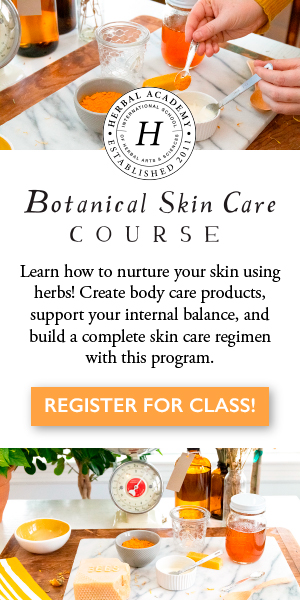
by Leslie Moldenauer | | Essential Oils
According to the Merriam-Webster dictionary:
Concentration
Is the act or process of concentrating: the state of being concentrated
Focus
A point of concentration
After working in a school for almost a year, I have seen quite a lot and its left me thinking, are we unrealistic in some of our expectations?
Teachers ask children on the regular “to focus” and “to concentrate”, and I found myself wondering, “what does that even mean to them”?
My background is a bit different from most. I have been practicing yoga for nearly 15 years and meditating on the regular for over a decade. I know focus. I know it because I practiced it. I know it because I was committed to learning how to sit still and quiet my mind. It took self-discipline and plenty of self-awareness.
Do small children even have the mental capacity? The cognitive skill?
When we look at what the experts tell us, on average, a 5-year-old child should be able to stay focused on a task for 2-5 minutes [1]. This is addressing tasks such as coloring a picture, putting together a puzzle, or practicing writing their letters. 2-5 minutes is all they have. This is an average. Some may only have one minute. How does this increase? Through practice, through repetition, through skill. It is a skill. Energetic children could be on the lower end. Notice my choice of words there (energetic).
I understand that Attention Deficit Disorder (ADD) and (Attention Deficit Hyperactivity Disorder) ADHD are real, and I am not trying to discount that in this article today in any way, but I am saying that it is over diagnosed. Severely so.
A few great tips for helping small children learn this skill:
* Giving them enough activity, time to play and get their wiggles out.
This goes for ALL children, not just young ones. Oftentimes children are given about 20 minutes outdoors in a 7-hour time window. Gym only happens once or twice a week. This is NOT enough. It would not be enough for me, and I do not have any issues with focus.
* Let them work on projects or play games that require their focus. Memory games are a great choice. When the child has completed a task, tell them “Good job, you focused or you concentrated on that very well”. By reinforcing with them what they actually did, they will begin to learn what that means. Practice.practice.practice….and plenty of reinforcement.
* Homework is done at the same time every day begins to foster a habit. Reward them with positive reinforcement when they have focused on the task and completed it.
*If you expect a small child to complete a task, they must have time to be active first.
*A child that struggles would benefit from activities alone over team sports that promote focus, like karate or dance for example.
I sat down with my 12-year-old the other day while this article was curating in my conscious, and asked him what the word focus meant to him. He said, “to concentrate”. I said OK, but what does concentrate mean, he smiled and said, “to focus on a task”. We both laughed and I said to dig deeper, how did you learn what this meant, and how did you get good at it.
He said, “I think it is like riding a bike”. There is not a clear set of instructions, but once you practice it over and over again, and are cheered on by your mom, you get really good at it, then you just never forget how it’s done”. He went on to say, in school is can be hard, because you are hardly ever allowed to talk, so there are moments when I wish I could get up, run around, yell and stuff…then sit back down and get busy”. Now, this is coming from a 12-year-old with no focus issues. This speaks volumes.
How to help and what hinders
“Approximately 3 to 5 percent of school-aged children have ADHD, according to much of the literature over the past several years, including the Surgeon General’s Mental Health Report (1999, 2001)” [1]. So there is a possibility that 1 or 2 children in a classroom of 20+ children will truly have an issue.
BUT, not everyone that has trouble focusing has an issue, especially if they are not allowed to move or talk much within their day. This is a fact often overlooked. Cause and effect……so important.
Outside of the examples I have given to help teach small children how to practice focusing, what can increase the issue?
*We can easily see that children do not get to move nearly enough in their day. This needs to be addressed.
*Nutrition plays a HUGE part in exacerbation of symptoms. Studies published in The Lancet, Pediatrics, and Journal of Pediatrics found that food additives do in fact affect many children with ADHD negatively [2] [3] [4]. Some even infer that artificial coloring and flavors, as well as the preservative sodium benzoate, a preservative found in specific food and drink, can make even some kids without ADHD hyperactive [5]. Let that sink in. Food is a HUGE player in this equation for most children.
*While the studies are not entirely conclusive, research is suggesting that there is a role of essential fatty acids, particularly omega-3’s and cognitive disorders including ADHD. These studies reflect low levels of omega-3’s in those that suffer from the condition [6].
*Good gut health is imperative. “The gut-brain axis (GBA) refers to the close link and constant communication between our ‘two brains’: the one that everyone knows about in our head, and the one that we’ve just recently discovered in our gut,” explains Shawn Talbott, Ph.D., a nutritional biochemist [7].
Talbott states that there is a series of complex nerves surrounding our gut called the enteric nervous system, and therefore working to heal the gut will have a profound effect on the central nervous system (CNS) as a whole. This is news that everyone should hear. From ADD, ADHD, anxiety, depression, and other mental health matters…. restoring gut health is really a critical piece that should not be overlooked.
So what products do I recommend? There are many out there, and not all are created equal. I will list two below, but if you would like to discuss it further, my door…or inbox is always open. Lifeholistically@gmail.com
Adults
Pro-45 Live Biotics (11 patented strains. Dairy Free. Delayed release veggie caps)
Kids
Nordic Naturals Probiotic Gummies (1.5 Billion Live Cultures in Synergistic Blend of Prebiotic Fiber)
(Affiliate links)
Ideally, I would encourage you to take a look at my online gut health program (the liver and overall stress levels and management included), found here. I go into this topic in great detail, a deep dive, and it is a great investment in your health. I cover diet, nutrition, herbs, essential oils, and mind/body balance techniques.
If you want to know how diet is affecting your child, this article is a must read
https://www.additudemag.com/feed-your-childs-focus-adhd-diet-nutrition/
Here is more on sodium benzoate
http://naturallysavvy.com/eat/this-is-why-sodium-benzoate-is-so-scary
What about essential oils?
Depending on the source, you can find many different recommendations for oils to help here. Because I am a believer that essential oils are not a one size fits all, especially for those with a diagnosed conditions such as ADD/ADHD, I am going to direct my attention to general concentration and focus, as well as calming for times of frustration as well as help with a restful night sleep.
Focus
Research has shown many times over that Rosemary (CT 1,8 cineole) essential oil is great for focus as well as memory. This study I am referencing shows that cognitive function and task abilities improved when subjects inhaled the aroma of Rosemary [9].
*Always do your due diligence and research to make sure that Rosemary or any essential oil I recommend is safe for you.
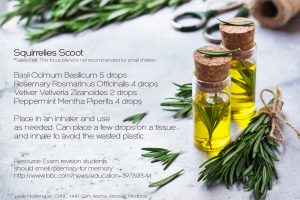
There are other essential oils that help to bring the calm and focus needed to complete a task. Antsy Pantsy is a great one to try for a child:
Antsy Pantsy (Master blend)
Mandarin Red (Citrus reticulata) 15 drops
Lavender (Lavandula angustifolia) 10 drops
Petitgrain (Citrus x aurantium) 5 drops
Cedarwood (Cedrus Atlantica) 5 drops
Blend and store in an amber or cobalt bottle in a cool place. Place in the number of drops according to your diffuser. Can also use in an inhaler.
Calming
This is a great blend to assist in calming both child and adult during times of frustration.
Just Hunky Dory (Master Blend)
Bergamot (Citrus bergamia) 15 drops
Lavender (Lavandula angustifolia) 10 drops
Lime (Citrus aurantium) 5 drops
Cedarwood (Cedrus atlantica) 3 drops
Vetiver (Vetiveria zizanoides) 2 drops
Blend and store in an amber or cobalt bottle in a cool place. Place in the number of drops according to your diffuser. Can also use in an inhaler. Not recommended on the skin unless you are using steam distilled lime and bergapten free Bergamot.
Sleep
A good night sleep is imperative for each and every one of us. Here are two bath blends, one especially for kids, and one just for you.
Children
Snug Bug (Master blend)
Vetiver (Vetiveria zizanoides) 4 drops
Sandalwood (Santalum spicatum) 8 drops
Petitgrain (Citrus aurantium var. Amara or Bigaradia) 8 drops
Lavender (Lavandula angustifolia) 12 drops
Blend and store in an amber or cobalt bottle in a cool place.
Use 3-5 drops of your master blend in a bath with 1 tbsp fragrance-free shampoo and 1 cup Epsom salts.
Adults
Blissful bath
Rose Absolute (Rosa x damascena) 6 drops
Lavender (Lavandula angustifolia) 4 drops
Epsom salt 1-2 cups
Unscented fragrance-free shampoo 1 tbsp
Full fat crème 1 cup
Bath Safety
When we look at basic chemistry, we know that essential oils will not mix with water, even when the water is hot. So what is the way to safely use essential oils in the bath? A proper diluent is necessary. The excipient needs to emulsify the water and oil properly to avoid skin irritation. A very small amount of fragrance-free organic shampoo is my number one choice to accomplish this. I say fragrance-free, as you want to avoid any possible chance of urogenital irritation. 1 tbsp of shampoo is all that is needed. I like to recommend a formulation like this: Epsom salt 1/2 cup (excellent to help your littles wind down before bed) Fragrance-free organic shampoo 1 tbsp Essential oil 2-4 drops Use the least amount for littles. Four drops are more appropriate for pre-teens/teens Mix into a container, then add to bath
Epsom salt, Himalayan sea salt, baking soda, etc., will not emulsify oil and water. Safety first! Always supervise small children. There is no “set” age for oil in the bath, but as a general precaution, if your child is still putting toys in the mouth, splashing, etc., don’t do it. I recommend waiting as long as you feel is needed, five or older may be a good starting point. Hydrosols will be the safer choice here for littles. Parents, please use your discretion.
I hope that I provided quality insight and food for thought on the topic, ways to improve health, happiness…and ability to focus.
To your health <3
Like so many practices in life, I encourage you to become educated on the proper use of essential oils. When using them, please do so cautiously, understanding that there is often misinformation on the internet. You can be assured that I support only educated and proven resources. While essential oils should not be feared they should be respected and used properly to ensure the safety of the individuals using them.
Please note that I am not a medical practitioner. The content of this website is provided for general informational purposes only and is not intended as, nor should it be considered a substitute for, professional medical advice. Do not use the information on this website for diagnosing or treating any medical or health condition. If you have or suspect you have a medical problem, promptly contact your professional healthcare provider. By using this website, you assume full responsibility and liability for your own actions.
BEFORE YOU GO! Remember to sign up for my FREE Facebook group! Hang out with me and THOUSANDS of other Essential Oil lovers looking to learn, click on to join Real Essential Oil Education Group!
Check out my FREE offer below!
References
[1] Focused Attention in Toddlers https://www.ncbi.nlm.nih.gov/pmc/articles/PMC2607062/
[2] Rief, Sandra F. “How To Reach And Teach Children with ADD/ADHD.” iBooks.
[3] Mccann, Donna, et al. “Food Additives and Hyperactive Behaviour in 3-Year-Old and 8/9-Year-Old Children in the Community: A Randomised, Double-Blinded, Placebo-Controlled Trial.” The Lancet, vol. 370, no. 9598, 2007, pp. 1560–1567., doi:10.1016/s0140-6736(07)61306-3.
[4] Kaplan, Bonnie J., Jane Mcnicol, Richard A. Conte, and H. K. Moghadam. “Overall Nutrient Intake of Preschool Hyperactive and Normal Boys.” Pediatrics, vol. 17, no. 2, 1989, pp. 127-32.
[5] Rowe, Katherine S., and Kenneth J. Rowe. “Synthetic Food Coloring and Behavior: A Dose Response Effect in a Double-Blind, Placebo-Controlled, Repeated-Measures Study.” The Journal of Pediatrics, vol. 125, no. 5, 1994, pp. 691-98.
[6] Mccann, Donna, et al. “Food Additives and Hyperactive Behaviour in 3-Year-Old and 8/9-Year-Old Children in the Community: A Randomised, Double-Blinded, Placebo-Controlled Trial.” The Lancet, vol. 370, no. 9598, 2007, pp. 1560–1567., doi:10.1016/s0140-6736(07)61306-3.
[7] Peet M, Stokes C. : Omega-3 fatty acids in treatment of psychiatric disorders. Drugs. 2005;65(8): 1051-9. https://www.ncbi.nlm.nih.gov/pubmed/15907142
[8] Malacoff, J. (2017) The Surprising Way Your Brain and Gut Are Connected. Retrieved from http://blog.amare.com/the-surprising-way-your-brain-and-gut-are-connected-shape-magazine/
[9] Plasma 1,8-cineole correlates with cognitive performance following exposure to rosemary essential oil aroma https://www.ncbi.nlm.nih.gov/pmc/articles/PMC3736918/
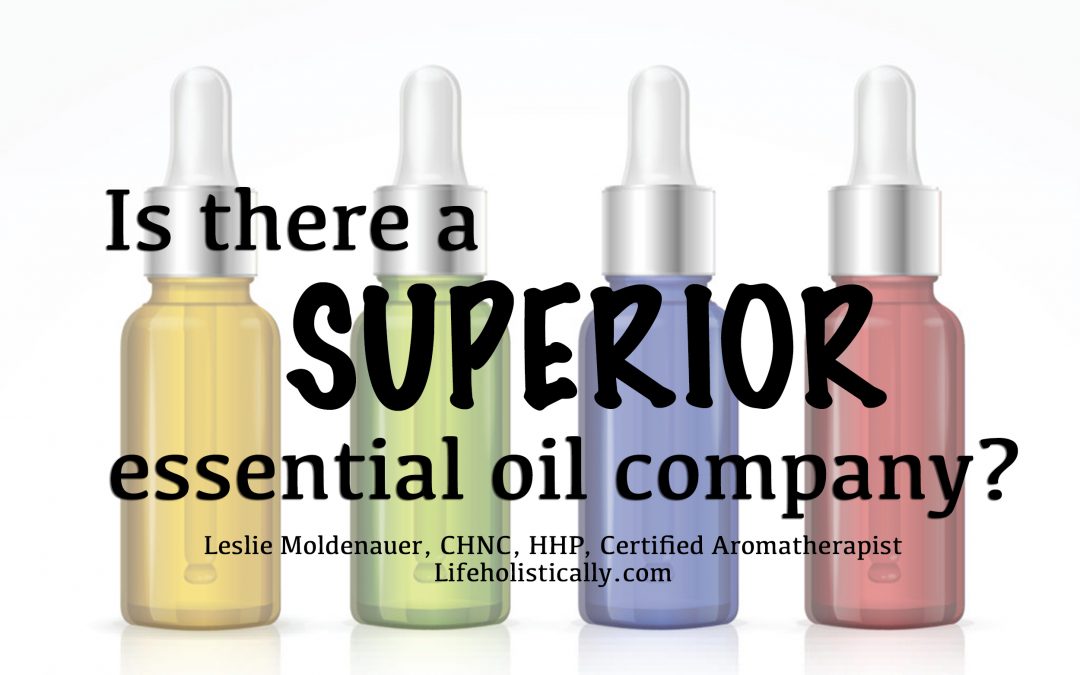
by Leslie Moldenauer | | Essential Oils
Which essential oils are the purest? Which ones are the only therapeutic grade oils? I jest with these questions, because there is simply not one superior company, one that gets the superior standard gold star, the only one safe for internal use, the best above the rest, and the most recent claim, refuted in my Facebook group, exclusivity with over 90% of their growers and distillers, well on their way to 100%. Is there a superior essential oil company?
*You might be surprised to know how many distillers provide oils to more than one company. It is a pretty small world.
Anyone that uses essential oils is well aware that there are no set standards, why is this? Essential oils are not currently regulated anywhere in the world. This has its benefits, but also plenty of disadvantages.
You may have been in a grocery store or health food store recently and seen a generous display of essential oils, many companies you may have never heard of before. Do a little investigative work. Do they have multiple oils all at the same bargain price? If so, this should be a warning sign. Essential oils should vary in price. Lemon, orange, peppermint, maybe similar. But oils like chamomile, frankincense, vanilla, and rose, should be significantly higher. (Not an all-inclusive list)
Specific essential oils can be quite costly. Let’s look at Rose Otto Rosa damascena from Bulgaria as an example. I quickly compared prices from 5 different essential oil companies and found an average price of $175 for 5mls. If you find a company selling the same oil for much cheaper, and is claiming to be 100% essential oils, not an oil blend, this is a red flag. Make sure you are paying attention to pricing.
Let’s face it, there are oils on the market that are adulterated, synthetic and simply nothing more than a fragrance oil, nothing more than a pretty smell, and knowing this is incredibly important. Crucial, in fact. These facts, however, have opened the door for plenty of mudslinging on the opposite end of the debate, the one of purity.
*To stay on top of essential oil companies that are known to be fraudulent, follow Dr. Robert Pappas on Facebook, a trusted chemist who calls it like it is. I sure do appreciate his blunt approach in calling a spade a spade in order to keep us safe, quite similar to someone else I know!
There are quite a few companies that I can recommend with 100% faith that they have quality essential oils. These oils are GC/MS tested and are proud to share those results with you, the buyer. This should be made available to you BEFORE you purchase, not after, which completely misses the reason for providing the test to their customers.
*Contact me with questions and recommendations @Lifeholistically@gmail.com
Gas chromatography (GC), mass spectrometry (MS), analyzes the constituents in essential oils. The testing provides a blueprint, and it can reveal additives. The GC/MS report is not the ONLY method to use, but it is a great place to start.
A GC/MS test can detect if an oil has been rectified. It will also reveal traces of solvents or mineral oils, so there is valuable information found within the report.
I understand not everyone knows how to read these reports, but I encourage you to find a supplier that you can trust. So how can you do that? Word of mouth is a fantastic way, not from just anyone, but a qualified professional.
*Want some tips on how to read the reports provided to you? Here is a GREAT resource, just copy and paste the URL into your search bar…..
Part I
http://phytochemiaactaen.blogspot.ca/2015/02/quality-control-101-part-i-third-party.html
Part II
http://phytochemiaactaen.blogspot.com/2015/10/quality-control-101-part-ii-how-to-read.html
Those that follow this blog know that I do not align with only one essential oil company; I buy from five or more, depending on what I am looking for. One thing I am not willing to do is to pay steep and unreasonable upcharges from any company, quality or not. A girl has to have a budget somewhere!
*When it comes to teaching essential oil safety, what oil you use makes no difference to me. You are ALL welcome.
Besides a GC/MS test report, what else should we be looking for?
All companies should share with you the common name, Latin name (genus and species), batch number, type of extraction (steam distilled or cold-pressed, etc.), chemotype when relevant, and how the plant was grown (conventionally/traditionally, wild-crafted, or organic). The more you know, the better.
In addition to all of this, your essential oil company should be transparent in regard to their dilution ratios when needed. If you have a blend that contains a phototoxic essential oil, or one with a maximum dilution ratio for safety purposes, which is common with anti-germ blends btw, these pieces are a need to know.
There are companies that state that they are not willing to share that information as the blend is a proprietary blend, but sharing the overall dilution or dilution of the oil in question by stating, “stays under the maximum dilution ratio of xyz”, “dilutions are safe for application to the skin”, or “2% dilution” are very critical pieces of information.
Work to develop a relationship with your supplier. Ones that want your business will answer any questions you have, happily. If you buy a significant amount of oils, you can skip the middleman so to speak and go directly to the distiller.
Here are a few other key qualities to look for in a company.
*Make sure your company has a strong noncontroversial reputation in the industry; this includes the overall attitude and professionalism of the owners if they are present on social media.
*Pick a company who has been in the field for a number of years and is well known/recommended by aromatherapy practitioners/educators.
*Do they follow the laws both on their label and their website? Do they make grand health claims for their products? Pay attention.
*As mentioned above and is crucial, your company should be dedicated to answering all of your questions to the best of their ability.
Many companies claim that their product is superior, from essential oils to herbs, to food, and more. This is expected. Opinions are even more so. The important thing to remember is authenticity. Marketing is expected, but fabricating?
Know the facts.
Like so many practices in life, I encourage you to become educated on the proper use of essential oils. When using them, please do so cautiously, understanding that there is often misinformation on the internet. You can be assured that I support only educated and proven resources. While essential oils should not be feared they should be respected and used properly to ensure the safety of the individuals using them.
Please note that I am not a medical practitioner. The content of this website is provided for general informational purposes only and is not intended as, nor should it be considered a substitute for, professional medical advice. Do not use the information on this website for diagnosing or treating any medical or health condition. If you have or suspect you have a medical problem, promptly contact your professional healthcare provider. By using this website, you assume full responsibility and liability for your own actions.
BEFORE YOU GO! Remember to sign up for my FREE Facebook group! Hang out with me and THOUSANDS of other Essential Oil lovers looking to learn, click on to join Real Essential Oil Education Group!
Introducing the Foojin Personal Wearable Diffuser
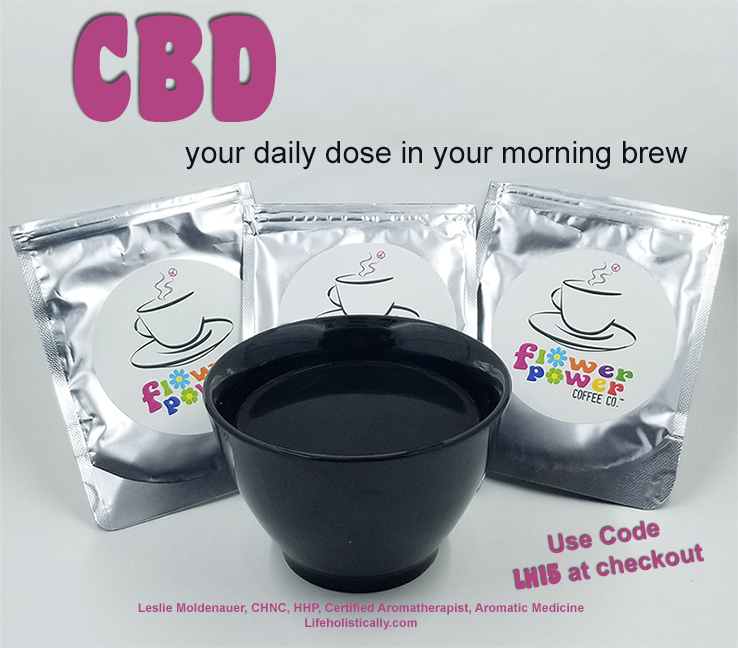
by Leslie Moldenauer | | Essential Oils
Cannabidiol, or CBD, has gained popularity in recent months due to its many proven health benefits. The form that you use is important, as not all are equal. Remember in my essential oil safety lessons, where I go into great detail on how essential oil and water do not mix? Well, the same applies to CBD oil. It does not mix well into the water.
Because of this, if you are taking a form of CBD that is not water-soluble, in a capsule for example or a drop under the tongue, you may be absorbing 10% at best and the rest is being excreted, mainly via your urine. If your CBD is truly water-soluble that makes all the difference. Let’s look at that a little bit further.
Water-soluble CBD must be re-engineered in a laboratory. Here it is turned into what is called nano-particles, or teeny tiny micronized particles that facilitate absorption into the bloodstream. It is not exactly dissolving, but very close to it.
What are some of the benefits of water-soluble CBD?
*Our bodies can directly absorb much more when taken in this form making it more bioavailable; in other words, it is able to act more systemically within the body.
*Because of this water-soluble more bioavailable form, CBD becomes much more cost-effective and dose accurately.
*There is no noticeable impact on flavor, consistency, texture or appearance in the water-soluble form.
*Water-soluble CBD is now available in beverages, a variety of foods and other edibles.
These are the reasons why I am thrilled to announce my newest collaboration with the quickly growing coffee company, flower power coffee co™.
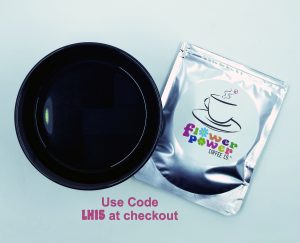
Their coffee contains water-soluble CBD and tastes amazing. There are a variety of flavors, and edibles too. I consider myself a coffee connoisseur; therefore it would have been a deal breaker for me if the coffee were not to my liking.
I happen to be a chronic pain sufferer and due to this along with being a single mom, stress levels are always on the higher end. A cup of this coffee every day has proven to be incredibly helpful in my life with both a decrease in pain as well as an overall calmer feeling as I begin my day. Both of these benefits are priceless.
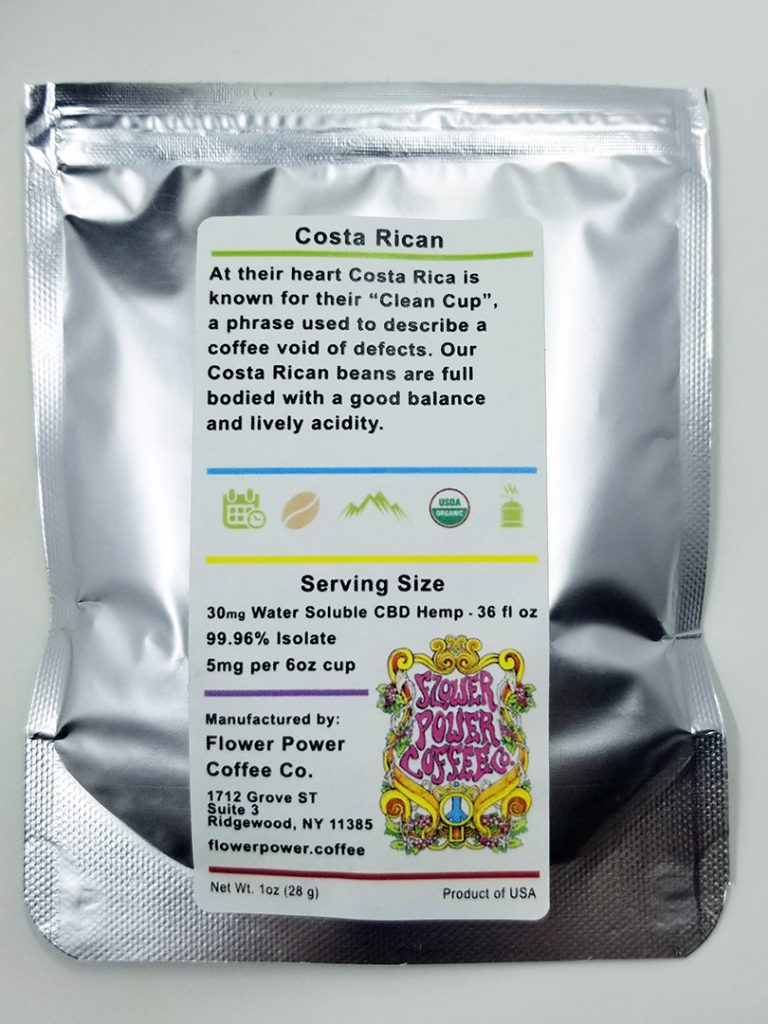
Another perk is I can now enjoy not just my morning cup of coffee, but also an afternoon cup when needed without the jitters that would normally go along with it.
I have also found it to be very beneficial in another way. Maybe all of you busy moms reading this will resonate here. I forget to take my daily vitamins more than I care to admit because I am constantly on the go, but I never forget my coffee. The same goes for self-care in the form of deep breathing or yoga. If I have to work, those moments can be hard to come by, but I get in my coffee every day without fail.
I am in love with this company, and I just know you will be too. Order through me for a great discount, not just the first time, but also every time thereafter. Remember to enter LH15 at checkout (15% off total purchase. Minimum $20 purchase).
The benefits of CBD are great, and now it tastes amazing too!
**Full disclosure, I am an affiliate for this amazing new company and will receive a small portion of the proceeds from the sale. You, however, do not pay any more for your purchase. You get 15% off by using the code LH15 at checkout!
Please note that I am not a medical practitioner. The content of this website is provided for general informational purposes only and is not intended as, nor should it be considered a substitute for, professional medical advice. Do not use the information on this website for diagnosing or treating any medical or health condition. If you have or suspect you have a medical problem, promptly contact your professional healthcare provider. By using this website, you assume full responsibility and liability for your own actions.
BEFORE YOU GO! Remember to sign up for my FREE Facebook group! Hang out with me and THOUSANDS of other Essential Oil lovers looking to learn, click on to join Real Essential Oil Education Group!
Check out my FREE offer below!
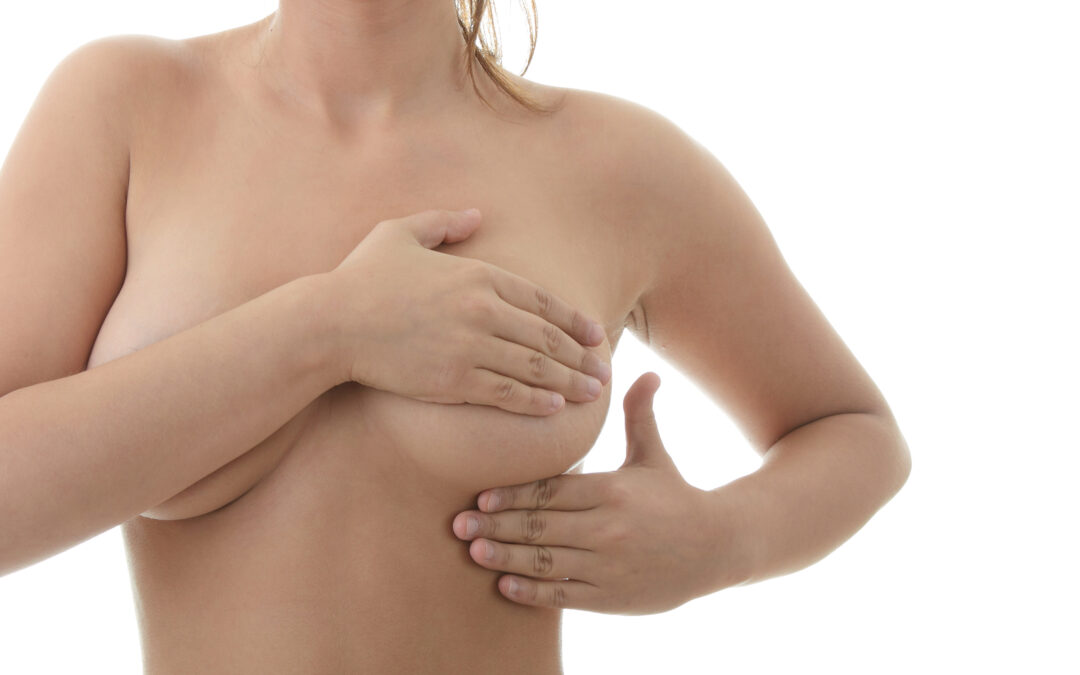
by Leslie Moldenauer | | Essential Oils
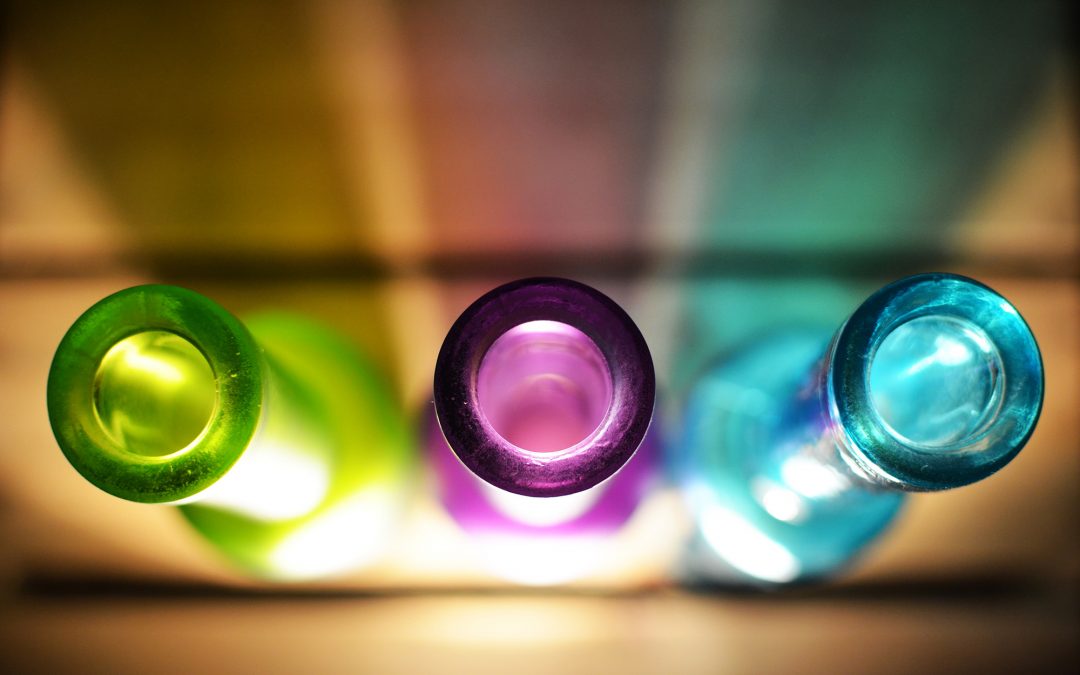
by Leslie Moldenauer | | Essential Oils
The word hydrosol is a chemistry term meaning “water solution”. It is derived from the Latin hydro, meaning, “water”, and sol, for “solution”[1]. My top uses for hydrosols-essential oils secret prize!
When steam distilling plants for their essential oil, there are two ‘containers’, one vessel collects the essential oil, and what is left is the fragrant water.
Every distillation process will contain hydrosol as the end result. Some discard it, others bottle it, and there are specific distillers that are dedicated artisans of hydrosols.
So what makes hydrosols different and gentler than essential oils?
According to Suzanne Catty, author of Hydrosols, The Next Aromatherapy, “Every liter of hydrosol contains between 0.05 and .2 milliliter of dissolved essential oil ”[2]. With hydrosols, the dissolved essential oil is micronized, in other words, the droplets are incredibly teeny tiny and thoroughly emulsified, much different than placing a drop of an essential oil in a glass of water. Hydrosols are incredibly safe for everyone, even to ingest…gasp….and are definitely a favorite first ‘aromatic’ for babies.
Some hydrosols smell very similar to the plant from which they were derived, while others do not, but they all contain therapeutic properties.
If you want to try aromatics, and you have a baby or a toddler, give hydrosols a try first. Here are a few of my basic recommendations:
Roman chamomile (Chamaemelum nobile) hydrosol
Roman chamomile hydrosol can be added to a bath and used for any skin discomfort such as diaper rash, heat rash, or cradle cap. This hydrosol can also be mixed with water and applied via a warmed or cooled washcloth; whichever is preferred.
German chamomile (Matricaria chamomilla) hydrosol
German chamomile hydrosol is preferred for teething pain.
Hydrosols are much safer and are still effective. You can apply German chamomile hydrosol neat (without a carrier) with a clean finger to the gum area for quick relief.
I began making hydrosol popsicles for toddlers with rave reviews. A mixture of German chamomile hydrosol (very little is needed), elderberry syrup, a small amount of raw honey to taste and water make tasty popsicles for toddlers. They instinctively know to bite down right on the spot that hurts, and it is smooth sailing. I love these silicone holders.
*Honey is not for babies under one year of age
Elderberry adds nutrition to the popsicle. Follow volume instructions based on the box of syrup. There are a lot of fun options here.
Lavender (Lavandula angustifolia)hydrosol
Lavender hydrosol is one of the more popular hydrosols on the market. Just like the essential oil.
Add Lavender hydrosol to a spray bottle and spray it on any reddened skin. It is an exceptional skin soother.
Add a capful of hydrosol to a bubble bath or to a small amount of lotion for a reassuring and relaxing bedtime massage. Lavender hydrosol is a great enhancement to any night-time routine.
*Do not add a large amount of hydrosol into an existing lotion, you may lose the quality of the emulsion. You would also need to add a preservative, as hydrosols are water based.
Peppermint (Mentha piperita)hydrosol (Not for use with small babies)
Peppermint hydrosol, in a spray bottle for cooling down on a hot summer day or if fever is present, is recommended over any other essential oil, hands down. Neither the hydrosol nor the essential oil counterpart will significantly reduce a fever but will definitely provide cooling comfort. You can also soak a washcloth with a capful of the hydrosol and apply to the forehead or back of the neck.
Here are a few more of my favorite uses…..
I have made up a solution 1/1/1 of calendula, tea tree, and Roman chamomile (can use German too) hydrosols as a toner for acne. A bottle sits on many countertops in my local area of teens that swear by it, and no longer use their soaps.
I have all but sworn off soap too! Why? Soap strips away the natural protective acid mantle in the skin creating irritation, it is also very drying, and for some teens even promotes acne! I typically do not use any particular mixture, although I am very fond of rose. Swoon….
I have made hydrosols a staple in my hair care routine. My hair is extremely thick, and extremely course, reminiscent of a horse’s mane, and getting to my scalp is a bit of a challenge. Without hydrosols, I had a really tough time rinsing out all of the conditioners; near impossible, in fact. Enter hydrosols. My favorite here is rosemary hands down, I love Chris Burder’s from Australia, but have substituted lavandin in a pinch. Right before stepping out of the shower I slowly pour cupful’s onto my scalp. My mix is usually 4 cups of warm water to ¼ cup hydrosol. Keep in mind that my hair is really thick and down to my waistband. Measure accordingly for your volume of hair. The result? A clean moisturized scalp, and much shinier manageable hair. I took this photo after a rinse and posted it on my Instagram page:
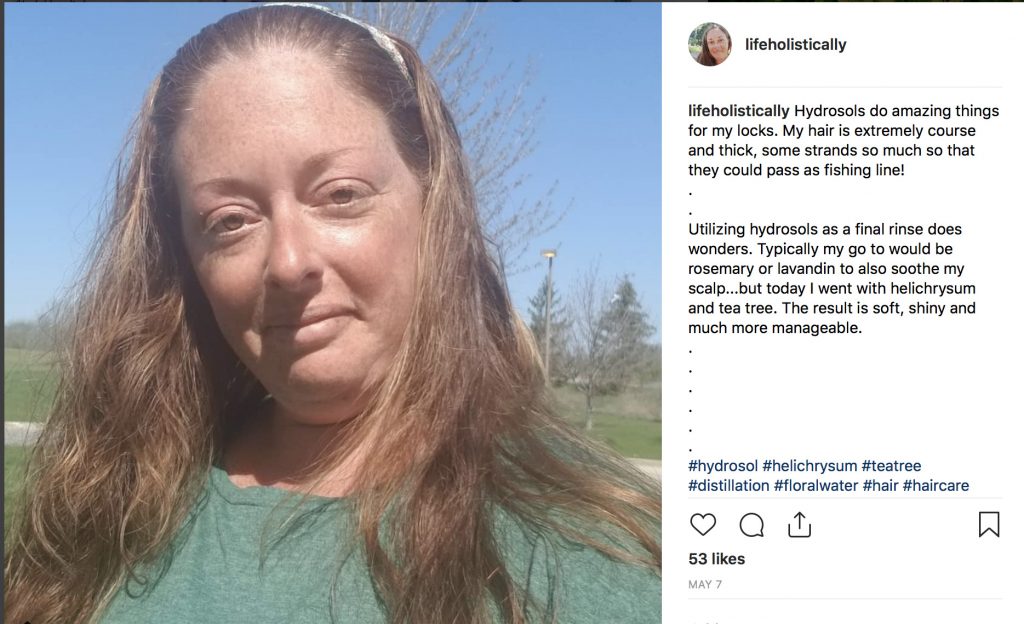
Start playing around with hydrosols, you will find many more uses for your whole family!
References
[1] [2] Catty, S. (2001) Hydrosols, The Next Aromatherapy. (p 9) Rochester, VT: Healing Arts Press
Like so many practices in life, I encourage you to become educated on the proper use of essential oils. When using them, please do so cautiously, understanding that there is often misinformation on the internet. You can be assured that I support only educated and proven resources. While essential oils should not be feared they should be respected and used properly to ensure the safety of the individuals using them.
Please note that I am not a medical practitioner. The content of this website is provided for general informational purposes only and is not intended as, nor should it be considered a substitute for, professional medical advice. Do not use the information on this website for diagnosing or treating any medical or health condition. If you have or suspect you have a medical problem, promptly contact your professional healthcare provider. By using this website, you assume full responsibility and liability for your own actions.
BEFORE YOU GO! Remember to sign up for my FREE Facebook group! Hang out with me and THOUSANDS of other Essential Oil lovers looking to learn, click on to join Real Essential Oil Education Group!
Check out my FREE offer below!
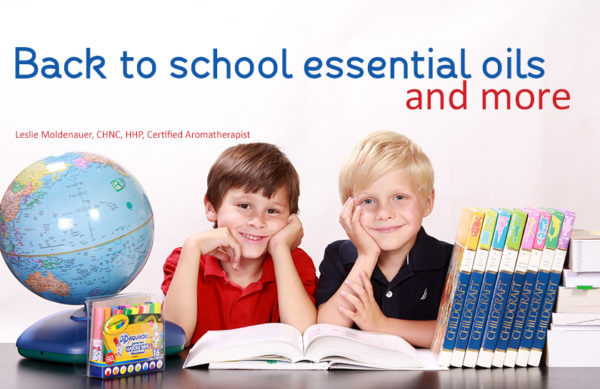
by Leslie Moldenauer | | Essential Oils
As children everywhere let out collective moans and groans, and parents secretly smile…mixed with a little bit of nostalgia, it is time to send them back to school. This is the time when the Internet and social media starts exploding with ‘top essential oils for back to school’ type posts as well. I will be sharing some of those here too, but I would be doing all of my readers a disservice if I did not approach wellness from a different angle. There are many things that we parents can be doing on a day-to-day basis to lessen the chances of illness or repeat illness that often gets overlooked. Back to School Essential Oils and More!
The three main staples of hydration, rest and hand washing are critical! You could do everything I mention in this article today, but if your child is touching desks, tables, door handles, and every other imaginable surface at school and not washing their hands multiple times a day, with soap, for a proper length of time..some say as long as it takes to sing happy birthday, best of luck to ya.
So, work on those three. My youngest tries to skip out on hand washing, heck he is even the kid to wet his hands briefly to show me, see they are wet! (he has been caught in the shower doing this too….KIDS) I remind him how shitty feeling shitty feels…albeit gently as I can, no mommy dearest antics over here…and he tries to do better.
What else can parents do? Quite a lot actually.
#1 Vitamin D-The sun is our friend. Research suggests three-quarters of U.S. teens and adults are deficient in vitamin D… leaving them with less-than-optimal health [1].
Your skin naturally produces your body’s supply of vitamin D from direct exposure to bright midday sun with a mere ten or fifteen minutes’ exposure per day. What is one of the symptoms of low Vitamin D? You guessed it….a greater incidence of cold and flu.
Taking a low amount of Vitamin D is perfectly safe if you are not able to get this amount of sunshine a day. It is said that fair-skinned individuals, especially redheads, can absorb and utilize Vitamin D much easier than others. Where you live also plays an important part. The closer to the equator you live, the better.
*Since Vitamin D is NOT a water-soluble vitamin, please be sure to get your Vitamin D levels checked by your doctor before taking large amounts via a supplement.
#2 Eat a healthy diet– Eating healthy will boost your immune system. Eat plenty of vegetables, fruits, nuts, and seeds which will provide your body with the nutrients your immune system needs. Simply put, illness and dis “ease” thrives on sugar. Consuming too much sugar suppresses the immune system cells responsible for attacking bacteria.
#3 Probiotics– Probiotics are a form of healthy gut bacteria. Their job is to stimulate naturally forming enzymes in the gut to keep out digestive system happy and healthy, and to keep us well. Keep your gut flora in check and in good balance by consuming plenty of fermented foods or by taking a quality daily supplement. Here is the one I use for my children.
#4 Echinacea– Echinacea stimulates the body to produce more infection-fighting white blood cells, such as T-lymphocytes and killer white blood cells [2]. Echinacea also seems to search out and destroy some viruses, such as the common cold and flu viruses. There have been many studies performed on echinacea with mixed results. Some say that echinacea should be used periodically as a preventative, others say use echinacea when you get sick. Do some research for yourself!
*Echinacea is NOT for you if you have an autoimmune condition such as lupus, rheumatoid arthritis, or diabetes. I recommend taking it for no more than 2-4 weeks, respectively, without taking a break.
Read more on echinacea here.
Most health food stores have Echinacea in a tincture form either on its own or combined with astragalus, another great herb for an immune boost. You can also buy this on Amazon, like here and here. Add the dose to their juice in the morning, or a glass of water right before bed.
#5 Elderberry Syrup– Used for its antioxidant activity, boosting the immune system, and is great for coughs, colds, and flu, elderberry syrup is a must have in your home. There is research to back up this powerful little berry, here is one study on PubMed. Elderberries contain amino acids, carotenoids, flavonoids, vitamins A and B and a large amount of vitamin C. They are also mildly laxative, a diuretic, and diaphoretic. Flavonoids, including quercetin, are believed to account for the therapeutic actions of the elderberry flowers and berries.
Here are some additional studies that speak to the benefits of elderberry. You can purchase at your local CVS, Walgreens, or buy on Amazon. I prefer to make my own.
*Kong F. Pilot clinical study on a proprietary elderberry extract: efficacy in addressing influenza symptoms. Online Journal of Pharmacology and Pharmacokinetics. 2009;5:32-43.
*Roschek B, Fink RC, McMichael MD, et al. Elderberry flavonoids bind to and prevent H1N1 infection in vitro. Phytochemistry. 2009;70:1255-61
*Ulbricht C, Basch E, Cheung L, et al. An evidence-based systematic review of elderberry and elderflower(Sambucus nigra) by the Natural Standard Research Collaboration. J Diet Suppl. 2014;11(1):80-120.
*Zakay-Rones Z, Thom E, Wollan T, Wadstein J. Randomized study of the efficacy and safety of oral elderberry extract in the treatment of influenza A and B virus infections. J Int Med Res. 2004;32:132-40.
#6-Great First Essential Oils to Support Wellness
Chamomile Roman (Anthemis nobilis)
Go stand in the middle of an apple orchard and close your eyes, take a big deep cleansing breath. You are smelling Roman Chamomile. R. Chamomile is very high in esters, therefore it is a very calming essential oil. It is also very soothing to irritated skin of all varieties and is a great tummy soother.
Lavender (Lavandula angustifolia)
The aroma of Lavender is fresh and sweet, floral and slightly herbaceous. Lavender is superior for supporting mental wellness, promoting a good night sleep, supporting a healthy stress response, and is great to soothe sun-kissed or irritated skin.
*Special note: Lavender is a favorite of many and used often, therefore, we should pay attention to how much we are using it (As we really should with any oil we use). Less is more.
Lemon (Citrus limon)
Lemon smells amazzzing! Super sweet, fresh, and fruity. Due to the phototoxic risk of this essential oil, I recommend diffusing only unless you are very well-versed in how to use oils topically that are phototoxic.
Diffusing lemon essential oil is a great support for a healthy immune system. It can also be utilized in school-aged children as a pick them up to get them started in the morning, or just to alleviate “Grumpy Gus” syndrome.
Orange (Citrus Sinensis)
This is by far the most used oil in my household. It calms my 12-year-old like no other oil. It is known as both uplifting for the mood, yet calming on the nervous system. Lavender is often called the Swiss Army® knives of essential oils, but I can easily apply that term here as well for sweet orange. Sweet orange is not photo-toxic to the skin, yay!. A few other varieties are Bitter orange Citrus aurantium var. amara, Wild orange Citrus sinensis (L.) Osbeck and Blood orange Citrus sinensis (not all-inclusive).
Steam distilled vs cold-pressed is often misunderstood when it comes to photo-toxicity. If you are unsure what you have, please reach out to your essential oil provider.
Mandarin Red (Citrus nobilis)
This is hands down one of my favorite citrus essential oils. Citrusy and tangy, super sweet and fresh. I would diffuse this oil when my oldest (probably 3 at the time) was going through a “Mom don’t you dare leave this room” phase. I would sit and rock him and Mandarin would have him resting in no time, but is great for all ages.
Mandarin Red is a superior, mood-lifter, and promotes all the happy go lucky feelings of being a kid. It is a great addition to a diffuser blend when under the weather, supporting a quicker recovery by providing comfort. Helps to calm thoughts so sleep can come. This essential oil is not phototoxic.
Rosalina (Melaleuca ericifolia)
Rosalina is herbaceous, medicinal, robust, warm, and slightly spicy.
There are even times when our little ones need assistance to push their bodies toward homeostasis. They need support. It is important to note that essential oils are not a cure, but there are times where essential oils are called on to give the immune system a little extra oompf. Rosalina can be used here.
A powerhouse for supporting a healthy respiratory system, Rosalina is a great oil for kids, has calming properties like Lavender as well as is soothing to skin bites and various irritations like tea tree. A very well-rounded essential oil, and a must-have for your wellness kit.
*Special note: If you are utilizing Rosalina between the ages of three months to one year to support a healthy respiratory system, I recommend light diffusing only. Save must-have topical use for Chamomile Roman, Lavender and Mandarin Red.
Respiratory Support
Most (not all) back to school illness needs some form of respiratory support. I do not hesitate to use the big guns like Eucalyptus, but seeing as many of my readers are newer to essential oil use, here are a few oils that you can use to provide the support you are looking for, without having to reach for Eucalyptus if you have concerns about doing so.
Cedarwood Atlas (Cedrus Atlantica)
Cedarwood Atlas is a great oil to support respiratory wellness and is safe for kids. Cedarwood can help to reduce spasms, address spastic coughs, and is an expectorant helping to combat phlegm. It is a great aroma for fall and winter, so in a diffuser, it has a dual purpose.
Here is a great blend for your diffuser when needed:
Cedarwood Cedrus atlantica 3 drops
Cypress Cupressus sempervirens 2 drops
Sweet Orange Citrus sinensis 5 drops
*This amount is suitable for a 400ml water reservoir diffuser. Adjust accordingly.
Fir Needle/Siberian (Abies sibirica)
The uplifting forest-fresh scent of Fir Needle supports a healthy respiratory system. Fir Needle helps ease congested breathing associated with typical seasonal illness. I feel this essential oil is a fantastic replacement for oils high in 1,8 cineole.
Steam Tent for Respiratory Support
Master blend
Fir Balsam 5 drops
Rosalina 5 drops
Spruce 5 drops
Pine (Pinus Sylvestris)
Pine is known for its ability to help support a healthy respiratory tract, and in a diffuser helps to clear/cleanse the air. It is also a powerful addition to cleaning products to help purify the home. You can add Pine to Lemon essential oil in a spray bottle if Pine-sol is a scent that you love. Make sure if only using essential oils and water than you use it quickly without a preservative.
I have given you a lot to think about today, if you have any questions, you can reach out to me anytime at Lifeholistically@gmail.com.
References
[1] Demographic Differences and Trends of Vitamin D Insufficiency in the US Population, 1988-2004. Retrieved from
https://jamanetwork.com/journals/jamainternalmedicine/fullarticle/414878
[2] Benefits, uses, and side effects of echinacea. Retrieved from https://www.medicalnewstoday.com/articles/252684.php
*There are affiliate links within the article. You do not pay any more for the suggestions made.















